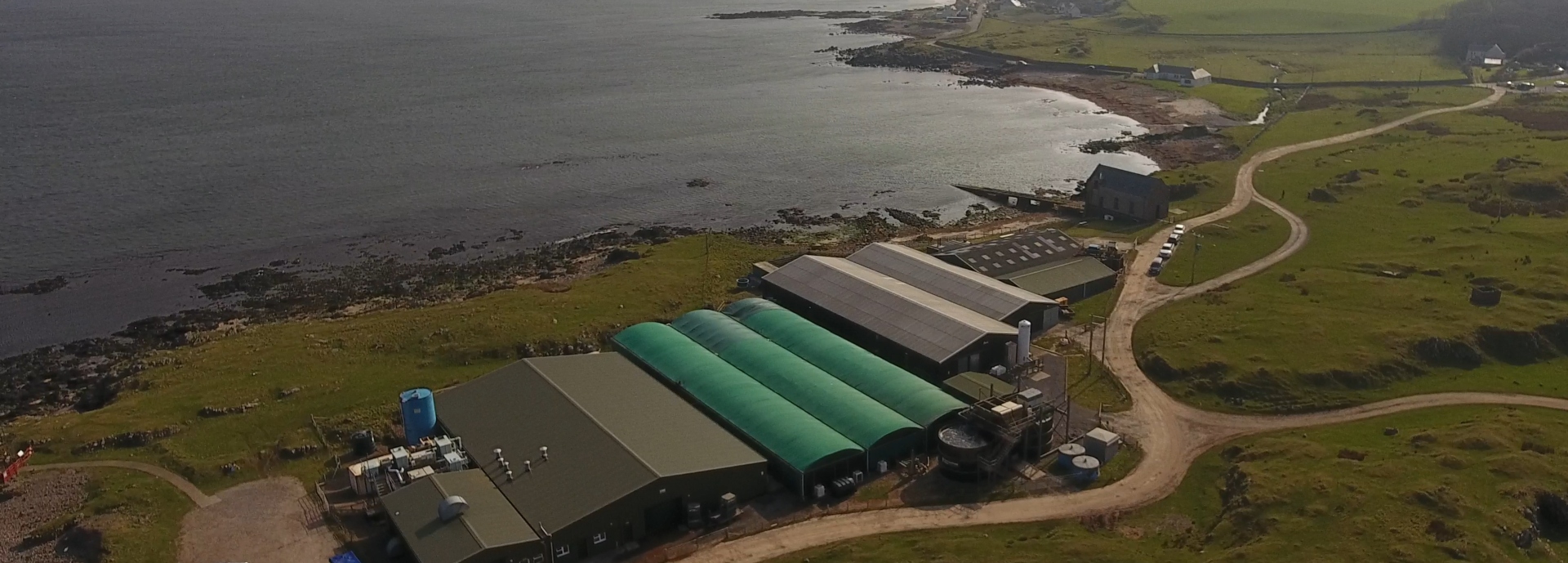Stirling expert to lead trials of salmon vaccine that could revolutionise aquaculture industry
Back to news
A multidisciplinary team of scientists has been awarded £1.5m to develop an oral vaccine to combat sea lice in farmed Atlantic salmon.
The project is a pivotal step towards a sustainable and effective solution to the pervasive challenges posed by sea lice in the aquaculture industry.
Dr Sean Monaghan of the University of Stirling’s Institute of Aquaculture will be conducting and running the vaccine trials and assessing molecular aspects of the parasite at infectious life stages that could be exploited for vaccination.
The trials will take place at the University’s Marine Environmental Research Laboratory (MERL) at Machrihanish near Campbeltown.
Dr Monaghan said: “Through testing combinations of immune-relevant sea lice antigens together, this project will enhance the immunological response to this complex disease agent.”
Economic impact
Many marine-farmed fish species are significantly affected by sea lice, impacting their health, welfare, and aquaculture productivity.
The salmon louse is an ectoparasite that feeds on the mucus, skin, underlying tissues and blood of farmed Atlantic salmon, and there is no effective commercial vaccine.
An increase in salmon louse prevalence and disease issues, largely as a result of climate change, has an estimated annual economic impact on the industry of $1bn (£789m).
Meanwhile, demand for salmon continues to increase, making the need for the timely development of an effective vaccine more pressing than ever.
There are major challenges associated with current control approaches against salmon lice that create a barrier against expansion of the industry, which is worth over £1bn annually to the UK economy.
Development of a commercial vaccine would provide a practical, safe and eco-friendly approach to tackling the issue while also supporting the goal of the Scottish Government to double the value of Atlantic salmon production between 2016 and 2030. Tests using traditional methods for administering salmon lice vaccines via injection have shown limited success.
Immune response
As an alternative, a team of internationally renowned experts in the field of ecto-parasitology, molecular biology, bioinformatics, veterinary medicine, and fish immunology are developing an oral vaccine that will generate an effective immune response within the skin of the salmon.
Funded by the Biotechnology and Biological Sciences Research Council (BBSRC), the project is an interdisciplinary collaboration between the Moredun Research Institute (MRI), the University of Stirling's Institute of Aquaculture (IoA), Bimeda Animal Health (BAH), which also provided a contribution of £150,000, and Vertebrate Antibodies Ltd (VAL) with an Industrial Award Partnership contribution from BAH.
Dr Kim Thompson of the Moredun Research Institute, who is leading the project, said: “The development of an innovative salmon louse vaccine represents a groundbreaking approach in the aquaculture industry.
“By harnessing the power of reverse vaccinology and artificial intelligence, our interdisciplinary team is poised to deliver a practical, safe, and environmentally friendly solution for combating the problem of salmon lice.
“This vaccine, designed to enhance both systemic and mucosal immune responses in Atlantic salmon, promises not only to bolster the health and welfare of the fish but also to support the sustainable expansion of the Atlantic salmon industry.”
Sam Dash, General Manager of AquaTactics, Bimeda’s aquaculture division, said: “Bimeda is pleased to partner with University of Stirling and Moredun Institute to develop a novel vaccine for sea lice.
“Aquaculture is among the fastest-growing sectors of animal health production and the development of an effective vaccine will be a significant development in addressing the extensive challenges that sea lice pose to the salmon industry.”

